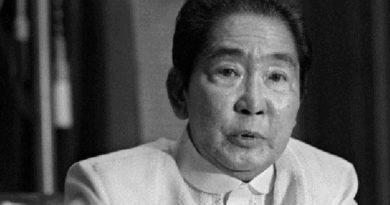LETTERS: Looking back on Malaysia’s digital journey
Looking back on M’sia’s digital journey
AS we celebrate 63 years of Merdeka and 57 years of the establishment of the Malaysian federation, I can’t help but look back at all the things our nation has accomplished. Specifically, on the critical strides we have taken to transform this nation into a global digital economy contributor.
The internet first came to our shores in 1987 and we established the first internet service in Malaysia known as the Rangkaian Komputer Malaysia (RangKoM). It connected all the universities to enable researchers to communicate with each other and was initially used only by academic institutions, the government, and private agencies.
At the same time, 33 years ago on June 8, 1987, the .MY domain was born.
According to the first Malaysian internet survey in 1995, only one out of every thousand Malaysians had access to the internet during that time.
This grew to 2.6% of the population by 1998.
Today, Malaysia is one of the most digitally connected societies in the world, with more than 90% of households having access to the internet.
The future is digital
I still remember the days of dial-up internet.
The signature undulating noise of the modem trying to establish a connection to the internet was a good sign that I am about to get connected.
Getting connected was a lot slower compared to today’s standards and trying to browse websites was a test of one’s patience.
Even with the slow speed, dial-up internet achieved one incredibly important purpose, which is to connect our home to the world.
Having a 56 kilobits internet connection in 1998 was then considered akin to driving a Ferrari because it is the fastest speed homes can get. Over the years, the speed has increased significantly. In 2020, having a few hundred-megabits connection from home has become the norm.
It is incredible how far technology has advanced over the years and how it has changed our nation for the better.
Malaysia has been recognised as Southeast Asia’s second most digitally advanced nation on Huawei’s Global Connectivity Index.
Our banking and e-commerce sectors are among the most evolved in the region, ahead of Hong Kong, China and Singapore.
Today, the digital economy contributes to a fifth of Malaysia’s economy and is worth over RM270 billion.
With the rapid growth in digital adoption, the government is determined to drive the agenda forward in ensuring a brighter future for Malaysia and Malaysians.
Unlocking the potential of SME
Despite the advancements that we have achieved, there is still a lot more work to be done, especially when it comes to supporting the micro-SME, which are the future of Malaysia’s digital economy.
Several businesses have yet to make the move to digital.
Only 62% of businesses are connected to the internet, with 46% having fixed broadband and a mere 18% having a web presence of some kind.
This means we must continue our efforts to create awareness and encourage Malaysians to make the digital leap into the future by breaking down the barriers to adoption.
Access to fast, reliable and affordable broadband is fundamental to growth and innovation.
Having good broadband services and ICT infrastructure is the foundation in transforming the country into a competitive business hub.
We are seeing significant progress, including connectivity in rural and remote areas.
The initiative called Jendela that was recently announced by Prime Minister Tan Sri Muhyiddin Yassin is a testament to Malaysia’s focus and aspiration to improve digital communications for Malaysians to compete in the global digital economy.
However, despite the increase in connectivity, large firms are adopting the digital economy in Malaysia at a higher rates than SME.
Most of the digital economy growth is concentrated in urban areas which increases the digital divide between urban and rural.
That is why agencies like MYNIC are tasked with incentivising and encouraging SME and micro-SME, particularly in the rural areas, to bring their business from offline to online.
We do this in the hope that it will benefit rural areas and help bridge the digital divide.
MYNIC is honoured to play a role in Malaysia’s digital economy journey, which goes beyond supporting local businesses, consumers and agencies with their unique internet brand identity.
We firmly believe that inclusivity, training and development are crucial to realising Malaysia’s digital vision.
At MYNIC, we are focused on training the OKU and rural communities to ensure that nobody gets left behind in Malaysia’s digital economy journey.
Our goal is to empower individuals and businesses in embracing digital processes to stay competitive in the market.
I have seen first-hand, so many individuals take their business to new heights after going through our training.
It truly goes to show that Malaysians have great products and services that are valuable to a potential customers locally and globally.
On reflection, Malaysia Day is a day for all Malaysians, regardless of background, age, religion or ethnicity to celebrate our achievements and also renew our focus and commitment for the future Malaysia and Malaysians.
I hope that we can all come together with the shared vision and goal to strive towards the digital economy.
Digitisation is the future, and I look forward to the next chapter in Malaysia’s digital journey.
Datuk Hasnul Fadhly Hasan is chief executive officer of MYNIC.


SIGN UP TO RECEIVE OUR EMAIL
.
The most important news of the day about the ASEAN Countries and the world in one email: [email protected]
9.17.2020









